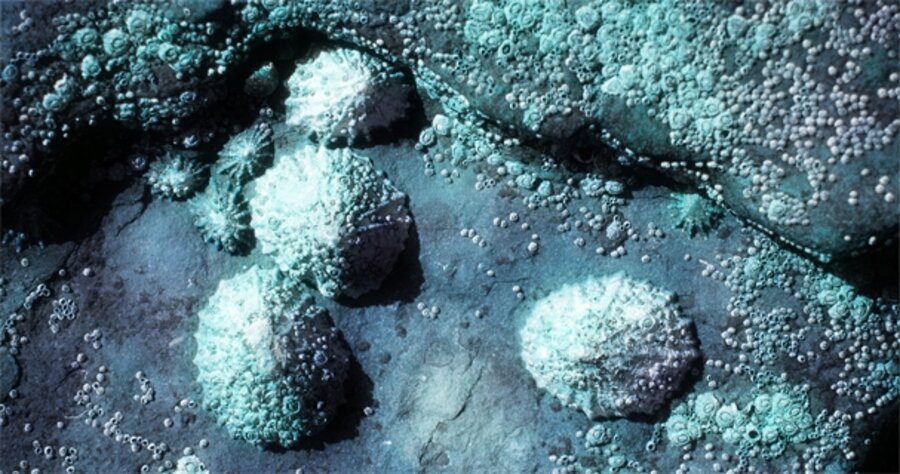New sea change forecasts present a slimy picture
Earth’s oceans are on the brink of massive change. You see it in such details as the hordes of Pacific mollusks that researchers have identified as ready to invade the North Atlantic as a thawing Arctic Ocean opens the way. You also see it in broad trends: A new overview warns that such relentless human impacts as overfishing or agricultural pollution – as well as global warming – threaten mass extinctions of marine life.
Jeremy Jackson at Scripps Institution of Oceanography, who made that overview, notes that this is “not a happy picture.”
He says that “the only way to keep one’s sanity and try to achieve real success is to carve out sectors of the problem that can be addressed in effective terms and get on with it as quickly as possible.”
For example, policymakers and governments can work aggressively to get international agreement on sustainable fishing practices that really work. They can vigorously pursue development and implementation of nonpolluting farming.
Change is a way of life in the ocean. It’s been going on since the planet formed. Even the potential mollusk invasion has a long history. Geerat Vermeij with the University of California at Davis and Peter Roopnarine at the California Academy of Sciences traced that history in last week’s issue of the journal Science. Pacific Ocean mollusks were invading the North Atlantic during a relatively warm period 3.5 million years ago. The scientists note that computer-based climate forecasts expect similar conditions to return by 2050 with a nearly ice-free Arctic Ocean.
Millions of years ago, abundant food and stiff competition in the Bering and Chuckchi Seas developed a population of shellfish bigger and tougher than Atlantic animals. These tough guys rode a northward water flow across the ice-free North Pole into the Atlantic. The researchers now have identified at least 77 lineages of equally rugged shallow-water shellfish in the Bering Sea that are ready to make that trip again. They explain that the earlier invasion led to new North Atlantic species but did not cause significant extinctions. They say that a new invasion will also change the makeup of North Atlantic communities. They add: “But whether that will harm local fisheries is an open question. Humans may have to adapt as well.”
Millions of years ago, only nature was at work. Now the human impacts Professor Jackson reviewed last week in the online Proceedings of the National Academy of Sciences have become a wild card in the game. Jackson explains that mass extinction does not mean loss of all ocean life.
But key elements of long established healthy food webs such as fish and sharks are disappearing. He warns that intricate food webs that feature large animals are being converted into simplistic ecosystems dominated by microbes, toxic algal blooms, jellyfish, and disease. It’s what the Scripps’ announcement of this research calls the “rise of slime.”
Jackson identifies coral reefs and estuaries and coastal seas that suffer from overfishing and farm runoff as “critically endangered.” Saving these critically endangered ecosystems would be a good place to start the long-term efforts to save the entire ocean from man-made devastation.





